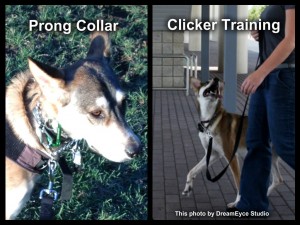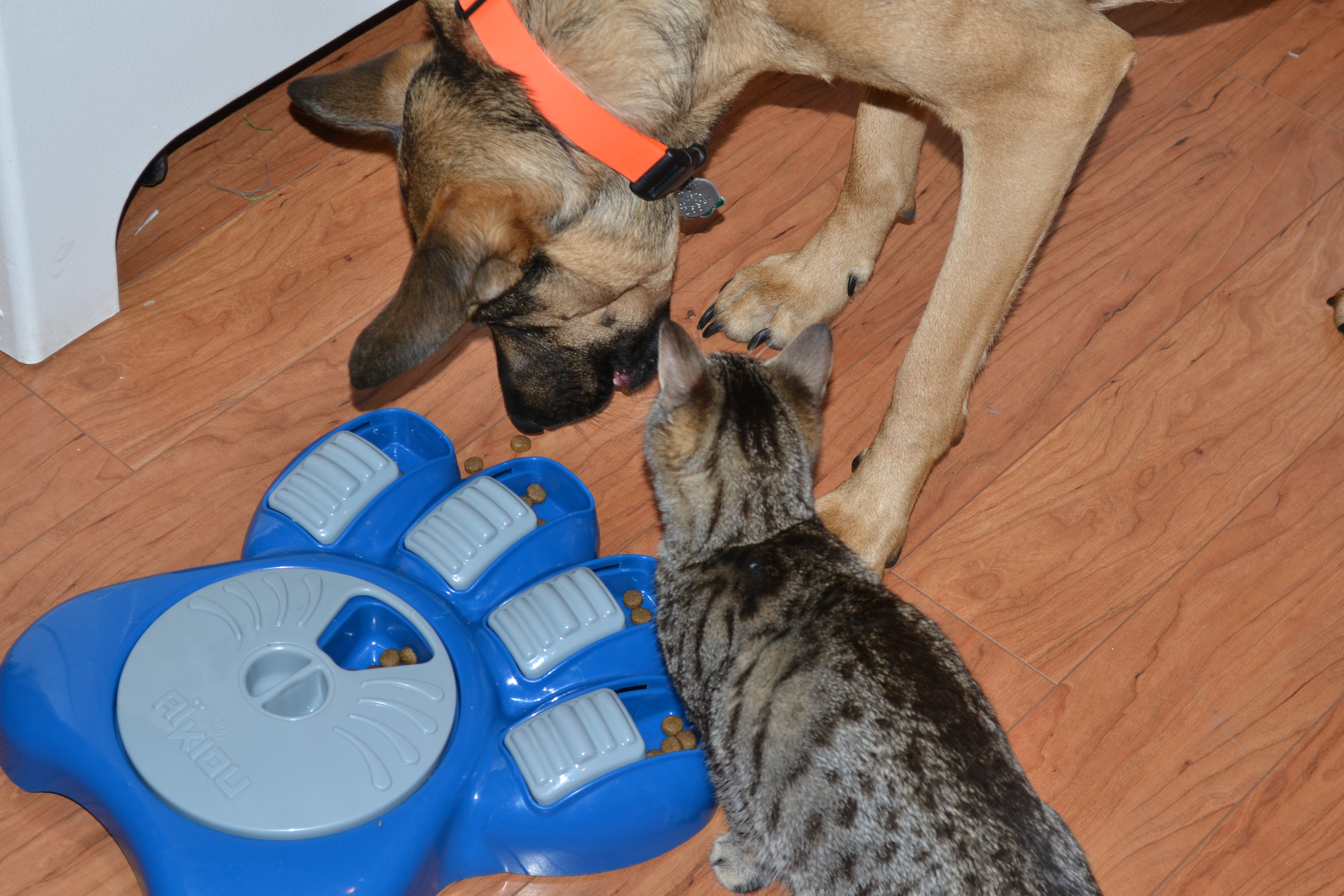 Why are prong collars and e-collars so popular despite the obvious physical and psychological harm they do to dogs? It’s because they give instant results. Unfortunately, positive reinforcement based training takes repetition for the dog to learn and change. Despite it’s proven long term effects on behavior, it doesn’t give the results as quickly as most people would like.
Why are prong collars and e-collars so popular despite the obvious physical and psychological harm they do to dogs? It’s because they give instant results. Unfortunately, positive reinforcement based training takes repetition for the dog to learn and change. Despite it’s proven long term effects on behavior, it doesn’t give the results as quickly as most people would like.
Prong collars and e-collars also don’t take much knowledge or talent to stop unwanted behavior such as pulling on leash, barking, or jumping. You simply yank the leash or press the button and it applies physical pressure to stop the dog in it’s tracks, at least this is how most people use these tools. This is why it’s called compulsion training. There is no thought to it since the correction is just a reaction to the dog’s behavior. Instead of setting the dog up for success, you put the dog in situations you know it will fail and then “correct” the unwanted behavior.
I used to use prong collars. I worked with a lot of dogs and had never had any issues keeping dogs in line and obeying with my methods…. Until I got my dog, Loker. It was the oddest thing. He didn’t even stop pulling most of the time without a short leash and several corrections throughout our walk. And then whenever another dog came by he went nuts over it. No one can say I used the prong collar incorrectly because I was an avid follower of Cesar Millan and successfully used his methods on over 100 dogs. I know how to make a dog “calm submissive.” These same techniques did not work on this one dog. In fact, they made things worse because his reactions increase d.
d.
Positive reinforcement has helped us by teaching him that when he sees a “trigger” (something he is fearful of or unsure about), he should turn to look at the handler (me) instead of continue staring at the trigger. I’ve used several different methods to change his response, but now all revolve around positive reinforcement. Why? Because while training the dog, I can also change the dog’s emotional response to the trigger. By making good things happen in the presence of the trigger, the trigger becomes less scary. Correction based training may change the outward behavior of most dogs, but it does not change the emotional response. The dog will subdue their outward reaction, but they will still remain unsure and/or fearful of the trigger. With Loker, the corrections made him even more anxious because in his eyes, whenever a dog approached, mom suddenly started yanking at his neck which caused him pain. He did not connect corrections with the barking and lunging behavior and instead connected the corrections to his trigger – like many dogs do. “When trigger appears, mom yanks at my neck.”
Positive reinforcement has helped him change his outward and emotional response, but it wasn’t a short journey. There is no “quick fix” that is also a long term fix. The dog’s feelings about the trigger will not change without your time and energy. While the journey might not be short, it is a fun one. It really opens the line of communication between dog and owner and is one I do not regret spending so much time on. Here is my post from last May about our improvement in one 6 week class – in a local park and around lots of other dogs: Treating Reactivity. It is still an on going project, the new puppy has added stress to our life and I’m busy trying to finish up school to graduate in May, but after that I will have plenty of time and I can’t wait to get started on it again because he really proved to me that he could do behave around other dogs.




